Fine and Panko breadcrumbs are a pantry staple that you’ll find yourself grabbing again and again.
Fine breadcrumbs have been around forever. Panko breadcrumbs started coming on the mainstream scene several years ago. The two can be used interchangeably, but there is a difference between the two.
What Are Panko Breadcrumbs?
Japanese panko breadcrumbs are larger crumbs than traditional ones and have an airy texture. They are used to add texture and a nice crunch. Because the crumbs are bigger they don’t absorb oil as much as breading when frying which makes for a lighter coating.
The commercially prepared panko breadcrumbs are made with an electrical current. But don’t worry, no special machines are needed to make them at home, keep reading and you’ll see just how easy it is to turn your past prime bread into the star of the show.
What Are Fine Breadcrumbs?
Just what they sound like. Fine breadcrumbs are what is typically used in Western cooking. Very fine crumbs that can be made out of any kind of bread and usually has some kind of flavoring added to it.
Just like panko breadcrumbs, fine breadcrumbs are used to add crunch. The fine breadcrumbs will produce a finer, denser crust.
What Are Fresh Breadcrumbs?
Same as fine or panko breadcrumbs only they haven’t been dried out in the oven. Just break bread into smaller pieces and then whirr in the food processor for a minute. Then bag and freeze for up to 6 months. Fresh breadcrumbs don’t store well at room temperature, they will mold.
What Kind Of Bread Should I Use For Panko Breadcrumbs Or Fine Breadcrumbs?
The choice is yours. Traditionally panko breadcrumbs are purely white bread, if you order panko crusted in a restaurant you most likely will be getting just that. Panko has little to no flavor, it’s there more for the texture and crunch.
I use whatever bread that is starting to turn stale and mix it all together. That gives the fine and the panko breadcrumbs a nice flavor. But if you are a traditionalist then go with pure white bread.
If the bread has a strong flavor profile then I’ll store it separate from other bread crumbs and not mix them together. Like the green onion cheddar rolls that you see in the picture. That should make a great coating for chicken or pork or a topping for mashed potatoes, but would add too much flavor other dishes.
Any bread that is starting to turn stale and is drying will make great breadcrumbs, from sandwich bread, hamburger/hotdog buns, French bread, dinner rolls, flavored bread, wheat bread, English muffins, pita bread, you name it and it will make good breadcrumbs.
If you are using fresh bread that is still in its prime, then put in the oven for a few minutes until it starts to dry out, then follow instructions for fine or panko breadcrumbs.
If you are using a denser bread, then cut into smaller pieces, like ½” by ½”, before putting in the food processor or baking to crush with the rolling pin. You may want to cut off the crusts for denser bread as the crust is typically pretty thick and sturdy.
Why Cut Crusts Off For Breadcrumbs?
I’ve wondered that myself and typically won’t cut off the crusts of regular sandwich bread, hamburger or hotdog buns or soft rolls. There’s really no reason unless you are a 5-star chef that insists on your fine breadcrumbs being super fine.
The only time I cut off the crust is if the bread has a heavy crust, like hard rolls, similar to the ones in the picture above. The green onion cheddar rolls had a thick crust and would not grind the same as the inside of the bread, leaving inconsistent texture to the breadcrumbs.
How To Make Panko Breadcrumbs With A Food Processor
Preheat oven to 300 degrees. Roughly break the bread into 2” long by ½” thick pieces. You can slice them into pieces with a knife or tear the bread apart.
Put crumbs in food processor and process for about 1 minute or until you reach the consistency that you want, using pulse near the end to control how small the crumb is. Only fill the food processor bowl a little over half full, so you may have to grind the crumbs in batches.
Place in a single layer on baking tray and bake for about 10 minutes or until the crumbs are dried out and just turning golden. Use two baking trays if needed, you don’t want to crowd the pan so much that air can’t get around the crumbs to dry them out. Keep an eye on them, it’s easy to burn if you aren’t paying attention.
Hot To Make Fine Breadcrumbs Without A Food Processor
If you have a food processor use it, the food processor will save you a lot of time and is worth pulling out from your cabinets. But if you don’t own one then here’s how you would make fine breadcrumbs.
This method has opposite initial steps from making panko breadcrumbs.
Preheat oven to 300 degrees. Roughly break the bread into 1” long by ½” thick pieces. Place on baking tray in single layer and bake for about 10-15 minutes until dried out and just starting to turn golden.
Cool the bread and then put in a large freezer resealable bag. I like the freezer bags because the plastic is thicker and won’t rip as easily as regular sandwich bags. Roll with a rolling pin to the fineness that you want. This method works best for fine breadcrumbs because it really crushes the bread and is hard to keep larger crumbs that are typical of panko breadcrumbs.
If you don’t have a food processor and you want panko breadcrumbs, then follow the above directions but grate the baked bread on a cheese grater rather than crushing with a rolling pin. Or if you aren’t making a lot of breadcrumbs then use a coffee or spice grinder.
Once crushed, you may see some larger chunks left in the baggie, usually bits of crust or pieces of bread that didn’t dry out completely. Use a strainer or sifter and shake out the fine bread crumbs into a bowl or cutting board. Toss the larger chunks and store the fine breadcrumbs.
How To Store Panko and Fine Breadcrumbs
I freeze all of my breadcrumbs, whether panko or fine. If the breadcrumbs have been thoroughly dried in the oven then they will keep in a covered container in a cool dark place for up to 6 months or more. If any mold starts, toss the entire batch.
Keeping fine or panko breadcrumbs in the cupboard works best if you live in a dry climate. I live in humid Atlanta so always freeze the breadcrumbs to keep mold from forming.
But how do you know if the fine or panko breadcrumbs are thoroughly dry? It’s hard to tell, that’s why I freeze mine.
Can I Freeze Panko Breadcrumbs?
Put fine or panko breadcrumbs in an airtight container or freezer resealable bag. Press air out of the bag and label with a permanent marker what the contents are and the date frozen. They will remain good for 6 months or more, indefinitely really, but the texture and taste will degrade after 6 months or so.
No need to thaw, just pull out as a first step when cooking and they’ll thaw quickly.
I like to freeze fine and panko breadcrumbs in small sandwich baggies in 2 cup capacities. Label. And then put those sandwich bags into a larger gallon size freezer bag. 2 cups are a typical amount needed for many recipes and makes it easy to just grab a bag or two without having to measure again when pulling the breadcrumbs out of the freezer.
Fill the sandwich baggies, press air out and seal. Then shake the bag and lay on its side so that the breadcrumbs are evenly distributed in a thin layer. This way the bags will layer well in the freezer and will defrost faster.
How To Use Fine or Panko Breadcrumbs
Breadcrumbs give a nice crunch to whatever they are added to. Try adding to:
-Coating for fried or baked foods like chicken fingers or fish
-Crunchy topping for casseroles
-Binding for meatballs, meatloaf, crab cakes
-Topping for almost any pasta, just to add a nice crunch and texture
-Topping to vegetables, just like pasta
-Thickening stews
Recipes for Fine and Panko Breadcrumbs
- Chicken Tenders With Parmesan Cheese
- Easy Steamed Green Beans
- 30 Minute Chicken, Couscous and Lemon Spinach

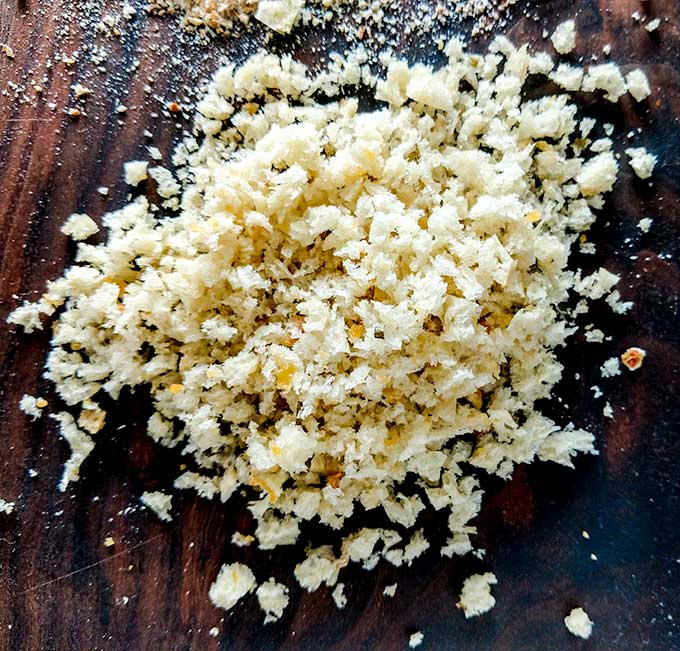

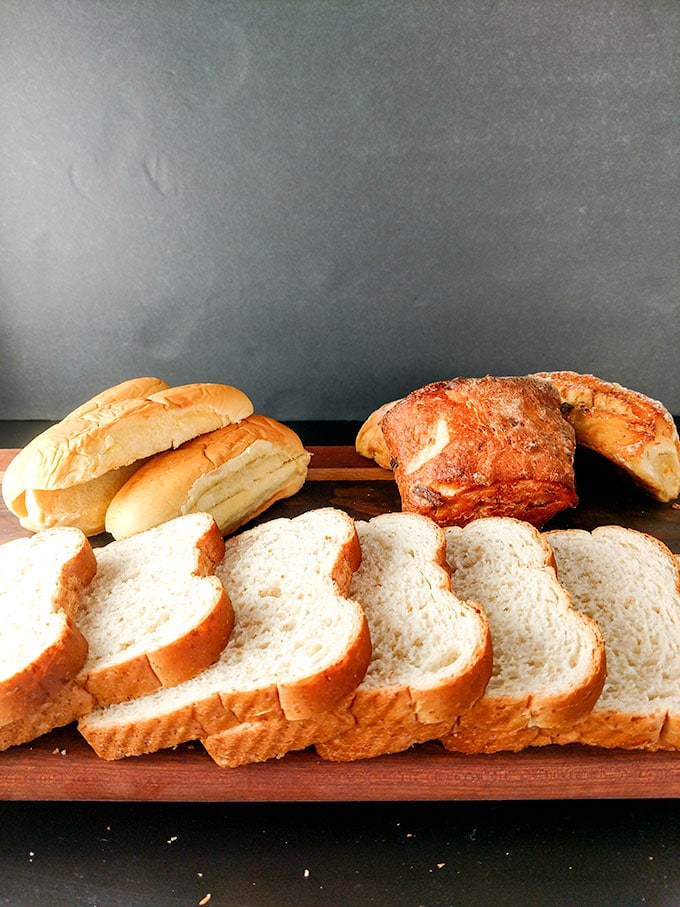

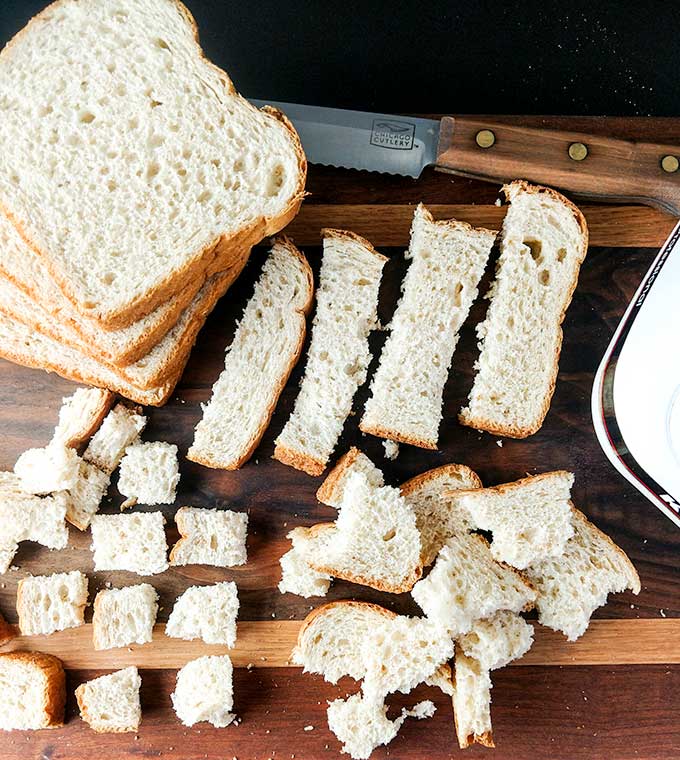

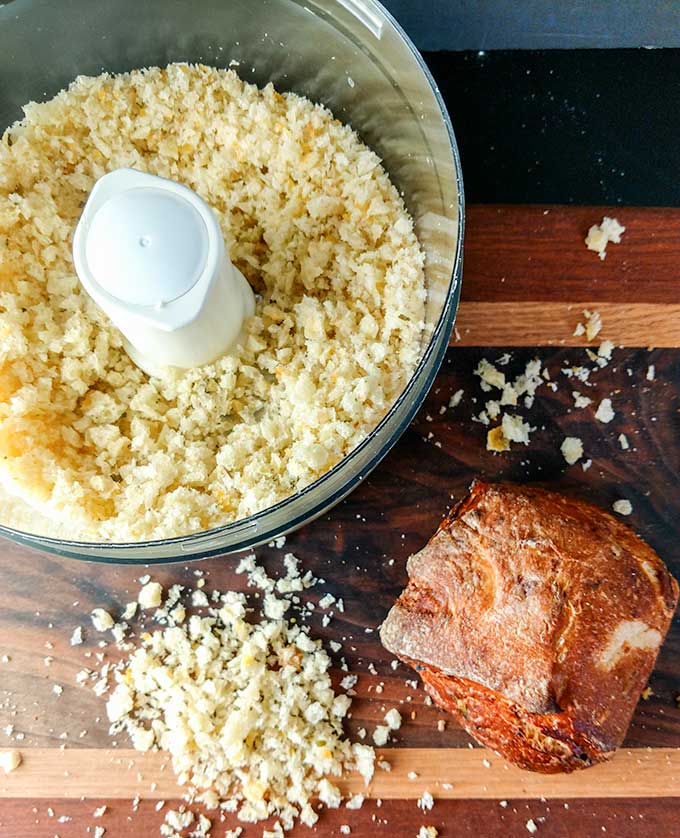

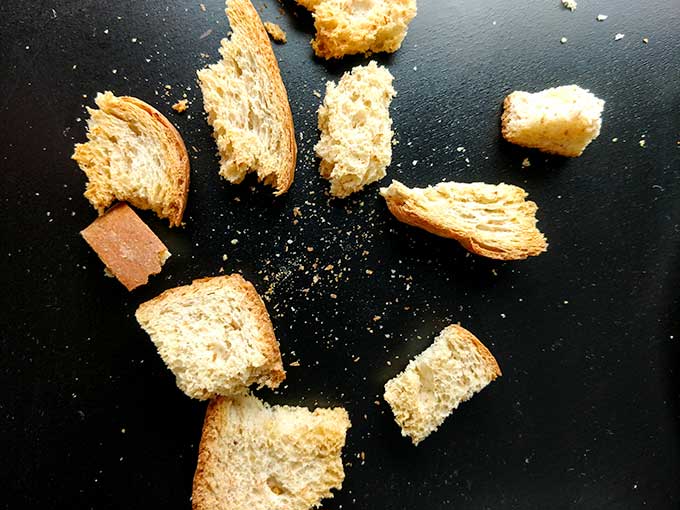

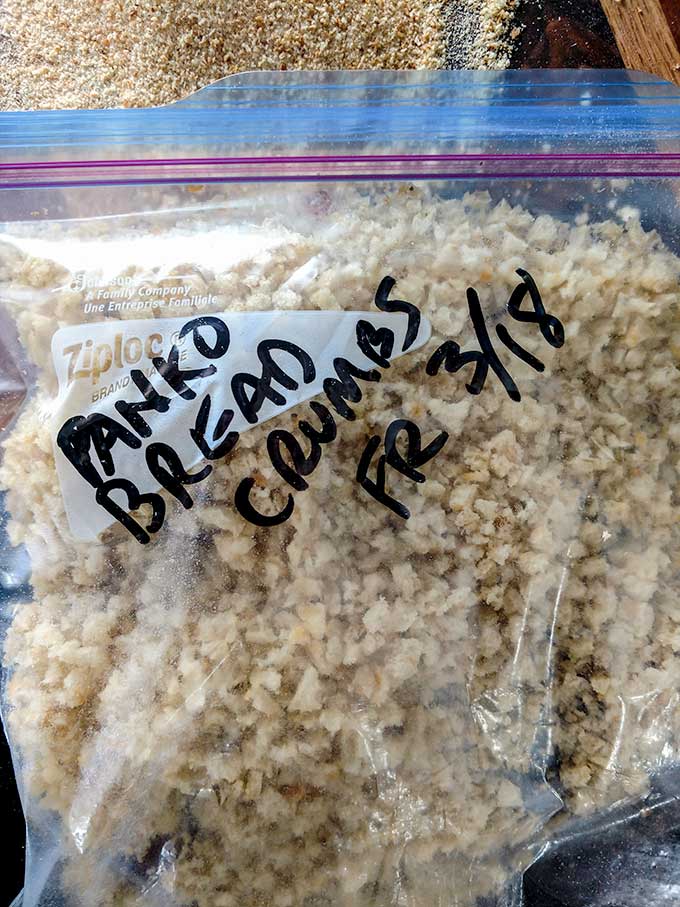
Leave a Reply